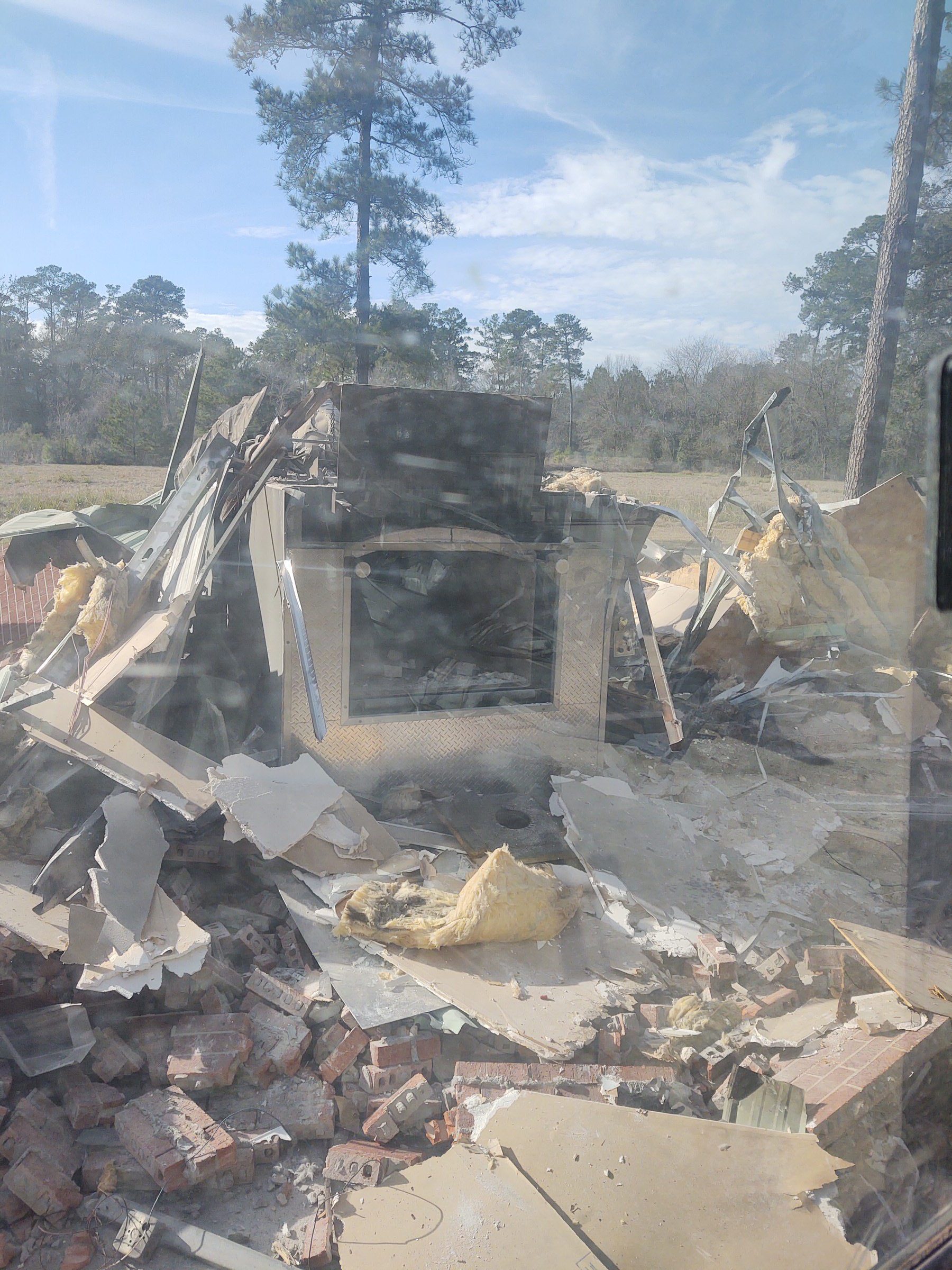Report on Texas Flooding Disaster: An Analysis of Institutional Response and Sustainable Development Implications
Impact on Community Resilience and Infrastructure (SDG 11)
A catastrophic flooding event in Texas, described as a “once-in-every-200-year” disaster, has resulted in significant loss of life and highlighted critical vulnerabilities in community resilience. This event directly challenges the objectives of Sustainable Development Goal 11 (Sustainable Cities and Communities), particularly Target 11.5, which aims to significantly reduce the number of deaths and economic losses caused by disasters.
- Human Toll: At least 120 fatalities have been confirmed, with over 170 individuals remaining unaccounted for.
- Institutional Response: The Federal Emergency Management Agency (FEMA) was deployed, with the administration praising the speed of the federal response.
- Infrastructure and Preparedness: Local officials face scrutiny regarding the adequacy of early warning systems and preparedness plans. A resident noted that infrastructure limitations, such as a two-lane road in a heavily affected area, would have made a mass evacuation dangerous, indicating a need for integrated disaster risk reduction planning (Target 11.B).
Institutional Efficacy and Governance in Disaster Management (SDG 16)
The disaster has brought the role and future of federal disaster relief institutions into sharp focus, aligning with SDG 16 (Peace, Justice and Strong Institutions) and its call for effective, accountable, and transparent institutions. The administration’s position on FEMA, the primary federal disaster agency, appears conflicted in the wake of the tragedy.
Policy Stances on Federal Disaster Relief
- Previous Commitment: The administration has repeatedly promised to “phase out” FEMA and devolve disaster management responsibilities to the state level.
- Current Position: In the immediate aftermath of the flood, public statements have shifted to praising FEMA’s performance. The White House Press Secretary stated that ensuring citizens have what they need is paramount, and the discussion of whether assistance is state or federal-led will continue.
- Institutional Reform: Homeland Security Secretary Kristi Noem, whose department oversees FEMA, is co-chairing a council to review and suggest overhauls for the agency. She has emphasized a vision of streamlining FEMA and empowering states, stating, “We as a federal government don’t manage these disasters. The state does.”
Climate Action and Adaptation to Extreme Weather Events (SDG 13)
The severity of the flooding serves as a powerful indicator of the increasing frequency and intensity of climate-related hazards. This event underscores the urgency of SDG 13 (Climate Action), specifically Target 13.1, which calls for strengthening resilience and adaptive capacity to climate-related disasters. The presidential visit, which includes an aerial tour and briefings at the state emergency operations center, is an occasion to assess the immediate response and consider long-term adaptation strategies. The focus on the “once-in-a-lifetime nature” of the event highlights the growing challenge of preparing for and responding to extreme weather phenomena linked to climate change.
1. Which SDGs are addressed or connected to the issues highlighted in the article?
SDG 11: Sustainable Cities and Communities
- The article’s central theme is a catastrophic flood in Texas, a disaster that directly impacts the safety and resilience of human settlements. It describes the “devastation caused by catastrophic flooding,” the loss of homes, and the disruption to the community, which are core concerns of SDG 11’s goal to make cities and settlements safe and resilient.
SDG 13: Climate Action
- This goal calls for urgent action to combat climate change and its impacts. The article describes the flood as a “once-in-a-lifetime nature of what occurred” and a “once-in-every-200-year deal.” Such extreme weather events are recognized as key impacts of climate change. The focus on disaster response and the need for better “early warnings” directly relates to strengthening resilience and adaptive capacity to climate-related hazards.
SDG 16: Peace, Justice and Strong Institutions
- The article extensively discusses the role and future of the Federal Emergency Management Agency (FEMA). The political debate about whether to “do away with the federal agency” or “bring disaster response management ‘down to the state level'” is a direct conversation about the effectiveness, accountability, and structure of government institutions. The article mentions efforts to streamline the agency (“cutting through the paperwork of the old FEMA”), which aligns with the goal of building effective and accountable institutions at all levels.
2. What specific targets under those SDGs can be identified based on the article’s content?
Under SDG 11: Sustainable Cities and Communities
- Target 11.5: “By 2030, significantly reduce the number of deaths and the number of people affected and substantially decrease the direct economic losses…caused by disasters, including water-related disasters…”
- The article directly relates to this target by reporting on the human cost of the flood: “at least 120 people” killed and “more than 170 people who are still missing.” The entire event is a water-related disaster causing significant human and likely economic loss.
- Target 11.b: “…develop and implement…holistic disaster risk management at all levels.”
- The discussion around FEMA’s role, the scrutiny of local officials’ preparedness, the need for improved “early warnings,” and the logistical challenges of evacuation (“a two-lane road”) all point to the need for and evaluation of holistic disaster risk management plans.
Under SDG 13: Climate Action
- Target 13.1: “Strengthen resilience and adaptive capacity to climate-related hazards and natural disasters in all countries.”
- The catastrophic flood is a natural disaster that tests the community’s resilience. The response efforts by federal and state agencies, and the resident’s comment that “they can improve on” early warnings, are directly tied to the concept of strengthening resilience and adaptive capacity to such events.
Under SDG 16: Peace, Justice and Strong Institutions
- Target 16.6: “Develop effective, accountable and transparent institutions at all levels.”
- The article’s focus on the political promise to “phase out” FEMA, the subsequent praise for its “fast” response, and the ongoing review to “overhaul the agency” are all centered on the effectiveness and accountability of this key government institution. The debate over federal versus state control (“We as a federal government don’t manage these disasters. The state does.”) is a core discussion about how to structure institutions for maximum effectiveness.
3. Are there any indicators mentioned or implied in the article that can be used to measure progress towards the identified targets?
For Target 11.5
- Indicator 11.5.1 (Number of deaths, missing persons and directly affected persons attributed to disasters): The article provides direct data points for this indicator.
- Mentioned: The article explicitly states the disaster has “killed at least 120 people” and that authorities are “still searching for the more than 170 people who are still missing.” These are direct quantitative measures of the disaster’s human impact.
For Targets 11.b and 13.1
- Indicator 11.b.2 / 13.1.3 (Number of countries that have adopted and implemented national disaster risk reduction strategies): While not stating the indicator directly, the article implies its components are being evaluated.
- Implied: The article discusses the existence and potential overhaul of a national disaster response strategy embodied by FEMA. The resident’s comment on improving “early warnings” and the mention of evacuation difficulties on a “two-lane road” imply a qualitative assessment of the local disaster risk reduction strategy’s effectiveness and completeness.
For Target 16.6
- No official indicator is mentioned, but progress can be measured through implied metrics.
- Implied: The effectiveness of institutional response can be measured by the speed of deployment, which the President praised: “You had people there as fast as anybody’s ever seen.”
- Implied: Progress in institutional reform is implied by the statement about “cutting through the paperwork of the old FEMA. Streamlining it, much like your vision of how FEMA should operate.” This suggests that efficiency and reduction of bureaucracy are being used as measures of institutional improvement.
4. Table of SDGs, Targets, and Indicators
| SDGs | Targets | Indicators (Mentioned or Implied in the Article) |
|---|---|---|
| SDG 11: Sustainable Cities and Communities | 11.5: Significantly reduce deaths and people affected by disasters, including water-related disasters. | Mentioned: Number of deaths (“at least 120”) and missing persons (“more than 170”). |
| 11.b: Develop and implement holistic disaster risk management at all levels. | Implied: The effectiveness of early warning systems and evacuation plans (e.g., resident’s comment on improving warnings and the problem of a “two-lane road”). | |
| SDG 13: Climate Action | 13.1: Strengthen resilience and adaptive capacity to climate-related hazards and natural disasters. | Implied: The capacity of federal (FEMA) and state agencies to respond to a “once-in-every-200-year” flood event. The need to improve early warning systems. |
| SDG 16: Peace, Justice and Strong Institutions | 16.6: Develop effective, accountable and transparent institutions at all levels. | Implied: The speed of institutional response (“as fast as anybody’s ever seen”). The progress of institutional reform (“cutting through the paperwork of the old FEMA. Streamlining it”). |
Source: kgw.com







